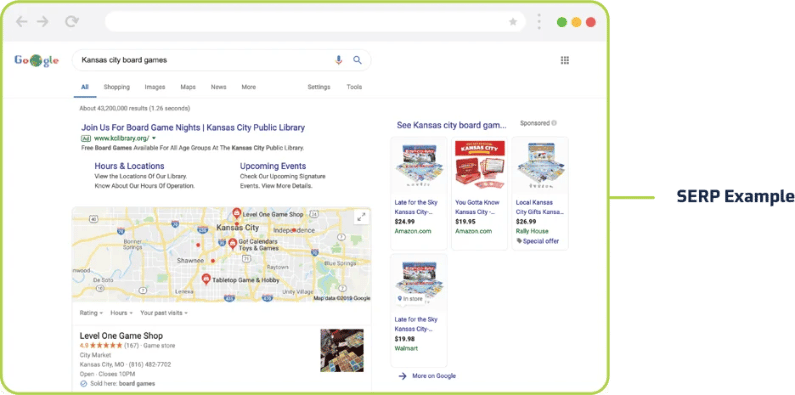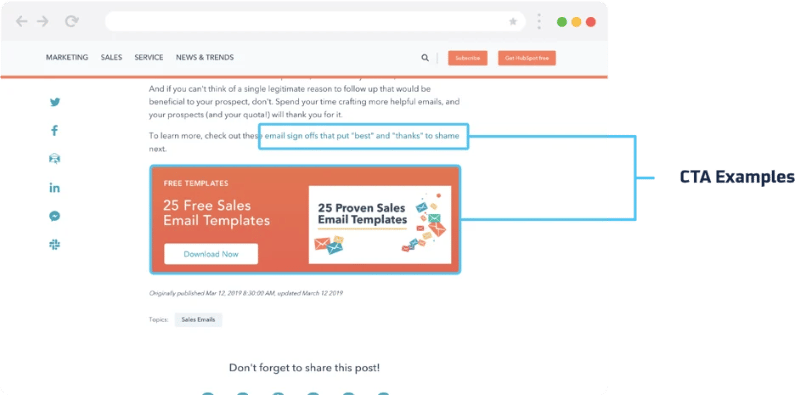Digital marketing is an ever-evolving space. It invents creative ideas, innovative approaches, and new terms all the time.
Along with creative ideas and innovative approaches often comes new terminology. For some who are new to the digital marketing world, trying to grasp all the current acronyms — we're talking CPC, PPC, SEO, SEM, CRO just to name a few — can be overwhelming.
For others who may know what the letters stand for ("Yeah, I know SEO; it means Search Engine Optimization."), they may not be entirely sure what the terms actually mean ("SEO is the magic formula that will get me on page 1 of Google, right?").
If you're just getting your feet wet within the industry, you may feel bombarded and confused about some of the marketing terms . . . and that's why you're reading this post. If that is the case, we've selected twelve acronyms that every marketer should know, and we provided a little insight into each.
Ready? Let's do this.
1. CMS: Content Management System
A CMS, or Content Management System, is a system used to manage an organization’s digital content, both images and copy. CMSs are most often web applications like WordPress, Wix, or Squarespace that allow non-developers to create, edit, and manage an attractive static website.
On the other hand, some CMS companies offer a more robust option. For instance, HubSpot offers a dynamic CMS. Their CMS allows users to not only manage website content, but it has the capability to make it smart. In other words, it can generate relevant content in real-time based on who's looking at the page. Also, get this: HubSpot's CMS integrates with their CRM system, email platform, social media management tools, and report-generating capabilities. Sounds like we're touting HubSpot, doesn't it? Well, we are. It's true. It's the only marketing and sales platform that we use, and we love it.
2. CRM: Customer Relationship Management
Customer Relationship Management most often refers to a system or software program that allows companies to keep track of everything they do with their existing and potential customers. A good CRM keeps contact information organized, tracks emails and phone calls, and can sort by opportunities and deals (won and closed).
Every business uses a CRM system. Some companies still use Excel spreadsheets while others have moved on to a newer, more powerful option — SaaS software. Some of those softwares include Salesforce, Freshsales, and Pipedrive.
Did we mention HubSpot offers a free CRM?
3. SaaS: Software as a Service
SaaS stands for software as a service. It includes any software that is licensed on a subscription basis and hosted by a third-party company which stores your information in the cloud. You may be using SaaS software now, but just didn't realize it. Examples include Dropbox, Adobe, and Zoom.
4. PPC: Pay-per-click and CPC: Cost-per-click (double whammy!)
PPC and CPC are often used interchangeably within the digital advertising community.

However, generally speaking, PPC is used to describe the advertising model used to direct traffic to websites in which an advertiser pays a publisher when the ad is clicked. PPC is commonly associated with first-tier search engines like Google (i.e., Google AdWords) and Bing.
CPC is what you are paying per click within your advertising program. In other words, CPC refers to the actual price you pay for every interaction your PPC ad earns.
5. CTR: Click-through Rate
Click-through rate (CTR) is the ratio or percentage of total users who saw a specific link divided by the users who actually clicked on that link. It's also commonly used to measure the clicks that your online ads receive divided by the number of times your ads have been shown which determines the effectiveness of online advertising campaigns and the success of the keywords targeted.
6. KPI: Key Performance Indicator
In short, KPIs (Key Performance Indicators) are measurements used by companies to evaluate success and track progress toward goals. In regards to the marketing team and sales team, they may have slightly varying goals within their departments, but they should also have joint KPIs since marketing and sales go hand-in-hand. Joint KPIs could include sales revenue metrics, ROI, lead generation stats, and more.
7. SEM: Search Engine Marketing
Search Engine Marketing was once used as an umbrella term to encompass both free and paid search activities. Over time, the industry has adopted the SEM acronym to refer solely to the process of gaining website traffic by purchasing ads on search engines. You might not hear this team used very often anymore — it seems to be phasing out — but if you do, you'll know what it means.
8. SEO: Search Engine Optimization
Search Engine Optimization, by definition, is simple: earning visibility through organic (non-paid) search engine results using technical and creative elements to improve rankings, drive traffic, and increase awareness. It's a small term that covers A LOT which is why SEO can be confusing.
SEO includes, but is not limited to:
- Increasing page-loading speed, fixing broken links and web crawling errors, assuring mobile-friendliness and sitemap accessibility (these actions are referred to as technical SEO)
- Researching and implementing relevant keywords that have strong search volume and limited competition, ensuring the on-page content satisfies the user’s search query, building internal links from page to page to create strong on-site content connections (called topic clusters), balance internal links with relevant and reputable external links (also known as outbound links), ensuring all visual content is named correctly, implementing keyword-based meta descriptions and headers (we call these elements onsite SEO)
- Researching valuable opportunities for link building outreach, prioritizing opportunities based on time, effort, and expected return value, strategizing outreach avenues (email contact, form submissions, forum discussion, etc.), tracking new inbound links (these pieces are known as offsite SEO)
- Ensuring that your organization is included in local listings (including Google) and that each is accurate and consistent, optimizing your site and content using your city and state names, link building with relevant local directories and business organizations (last, but not least, this is local SEO)
Oh, and heads up: SEO is also now a job position. Yep, an SEO can be hired solely to do SEO. Search Engine Optimization can be done by a Search Engine Optimizer.
This, friends, is why people can be easily confused by the term SEO.
TIP: SEM is the buying of traffic through paid search listings; SEO is the earning of traffic through free and organic means.
9. SERPs: Search Engine Results Pages
With all this talk of SEO and ranking on search engines, we should talk about the term SERP. SERPs — Search Engine Results Pages — are web pages served to users when they search online using a search engine like Google, Bing, or Yahoo.

Now, let's talk about the anatomy of a SERP for a sec. You'll notice many different types of listings. Unlike the early days of Google when every result on the SERP looked the same, we now have Rich Snippets, Paid Results, Universal Results, and Knowledge Graph Data. It takes a moment to get a grasp of these elements, but they all work together to help the searchers.
10. CRO: Conversion Rate Optimization
CRO stands for Conversion Rate Optimization and focuses solely on the point of conversion or getting a website visitor to take a specific action that leads them further into the buyer's journey or down the marketing & sales funnel.
So, for instance, if your website's visitors aren't taking the actions that you want them to take (i.e., signing up for an e-newsletter, creating an account with a login and password, requesting a content offer, making a purchase, downloading an app, etc.), it could be a conversion problem. If they're not converting from a visitor to a lead, then it's likely they'll never become a customer either. So, you best think of ways to modify and optimize your approach. Sometimes it's a matter of evaluating your UX/UI or changing the design of your CTAs.
11. UX/UI: User Experience/User Interaction
UX and UI are very closely related, but they are different. User Experience, or UX, is the process of researching, developing, and refining all aspects of a user’s interaction with a company to ensure the company is meeting the user’s needs and expectations. In relation to website design & development, it's the process of creating a site that is optimally intuitive and helpful. User Interaction, or UI, is the presentation of the product or service throughout the website and the visual elements such as fonts, images, buttons, and icons; it also creates clarity regarding the visitor's next steps.
12. CTA: Call-to-action
A call-to-action (CTA) is an image or line of text that prompts your visitors, leads, and customers to take action. It is, quite literally, a "call" to take an "action." An example of a CTA is “click here.” The button at the at the bottom of this post is also a CTA.

CTAs can live on your homepage, within website pages, on landing pages, and blog posts. And calls-to-action can be used for different purposes. Discover eight types of CTAs you should have on your website.
While there are many more marketing acronyms, this list is a great starting place. As more terms pop up, jot them down, then look up definitions later. Keep them together in one place for quick reference. The best way to grasp new things is to ask questions and find answers! #knowledgeispower #themoreyouknow
If you're looking for a comprehensive list of marketing terms and acronyms that still digestible, check out HubSpot's post, The Ultimate Dictionary of Marketing Terms You Should Know.
So, to land this plane . . . if using acronyms as an indicator, it's easy to understand how digital marketing can be confusing and overwhelming at times. If you could use help with your company's branding (there's another million-dollar term), website design & development, or digital marketing planning, we'd be happy to help you. Learn about our services or shoot us a note.
Subscribe to Our Blog
Stay up to date with the latest marketing, sales, and service tips.




